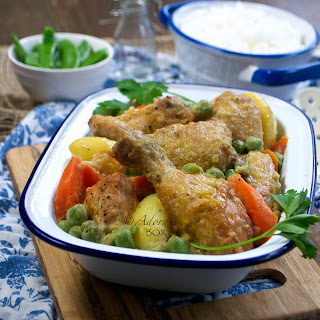The question of why Philippine cuisine is not as popular as the other Southeast Asian cuisines still remain. There are funny, sometimes insulting answers. I choose not like to delve deep into the matter but I have a few ideas of my own.
Philippine cuisine is hybrid. It is has Chinese, Spanish as well as Southeast Asian influences. While other cuisines can be described and recapped in one sentence, Philippine cuisine is so diverse that it can't be given a one-description-fits-all label. While other cuisines would have a characteristic taste profile, Filipino food would vary from dish to dish. Those who have tried and like Filipino food would usually mention particular dishes rather than the collective cuisine.
More often than not, adobo springs to mind when Filipino food is thought of. While there are indeed many soy sauce based dishes (the most popular of which is adobo), there are more tomato sauce based dishes. Four hundred years of Hispanic rule has shaped the Philippine cuisine by so much (though not fully).
The name of this dish would ring a bell to any Hispanic country because the word fritada simply means fried and would refer to a fried dish. Having said that, in Filipino, the word afritada would refer to a braised tomato based dish. As in the classic method of braising, the meat is fried first before being simmered in an aromatic sauce.
Despite its festive looks and taste, it is actually an everyday dish. The ingredients and cooking methods are very simple. The addition of potatoes is common in many dishes to add bulk and to stretch the dish to make more servings. If you haven't tried cooking Filipino food, this would be a good first dish to try. There is no special skill needed. The process is similar to any other stew.
As with many Filipino dishes, this one goes really well with rice and as a common Asian practice, is served with a dipping sauce, which of course is patis (fish sauce) as you might have guessed.
Ingredients:
1 c. of plain (all-purpose) flour
1 tsp. fine sea salt
1/4 tsp. ground black pepper
1 whole chicken (about 1.2 kg. in weight), cut into portions
cooking oil for shallow frying
2 tbsp. olive oil
1 tbsps. garlic
2 medium onions, sliced
1 c. passata (sieved tomatoes) or tomato sauce
2 c. chicken stock
2 tbsps. of tomato paste
1 tbsp. balsamic vinegar
1 bay leaf
3 tbsps.brown sugar
1 tsp. toasted kasubha (dried safflower or bastard saffron)
1/2 small sweet red pepper
1/4 tsp. ground black pepper
fish sauce to taste
2 tbsps. butter
2 tsps. crushed garlic
1 c. frozen green peas
Instructions:
Mix the flour, salt and pepper in a large, clean plastic bag.
Put the chicken portions in, a few at a time, and shake to coat lightly with flour. Shake off the excess and transfer to a tray. It is important not to over flour the chicken as this will result to a gloomy sauce. Repeat until all of the chicken pieces are floured.
Heat up enough oil (about 1" deep) for shallow frying. Fry the chicken portions, a few at a time until golden (about 15 minutes per batch).
Heat up the butter in a skillet. Add the garlic and sauté until golden. Add the onions and cook until translucent.
Add carrots, tomato puree, stock, tomato paste, vinegar, bay leaf, brown sugar and kasubha (you can substitute this with a pinch of saffron). Stir then bring to a boil and simmer for 10 minutes.
Add the fried chicken portions, sweet red pepper and ground black pepper. Bring back to the boil and simmer for about 20 minutes or until the chicken is tender.
Season to taste with the fish sauce.
In a separate pan, saute the garlic in the butter until light golden brown. Skim the garlic from the oil then add to the chicken together with the peas.
Stir gently. When it come back to the boil, the dish is ready.
All rights reserved ©Adora's Box Copyright 2011.
Please support Adora's Box by making your Amazon.com and mymemories.com (use the code STMMMS55174) purchases from this site. Click on their respective banners to proceed to their websites. It will not cost you a single cent more but will help sustain this blog. Thank you.
You might also like
 |
| Chicken Cacciatore |
 |
| Buttery Chicken |
 |
| Pollo Con Guisantes (Manok sa Guisantes) |









No comments:
Post a Comment
Did you like this post? I'd love to hear your thoughts...
Note: only a member of this blog may post a comment.